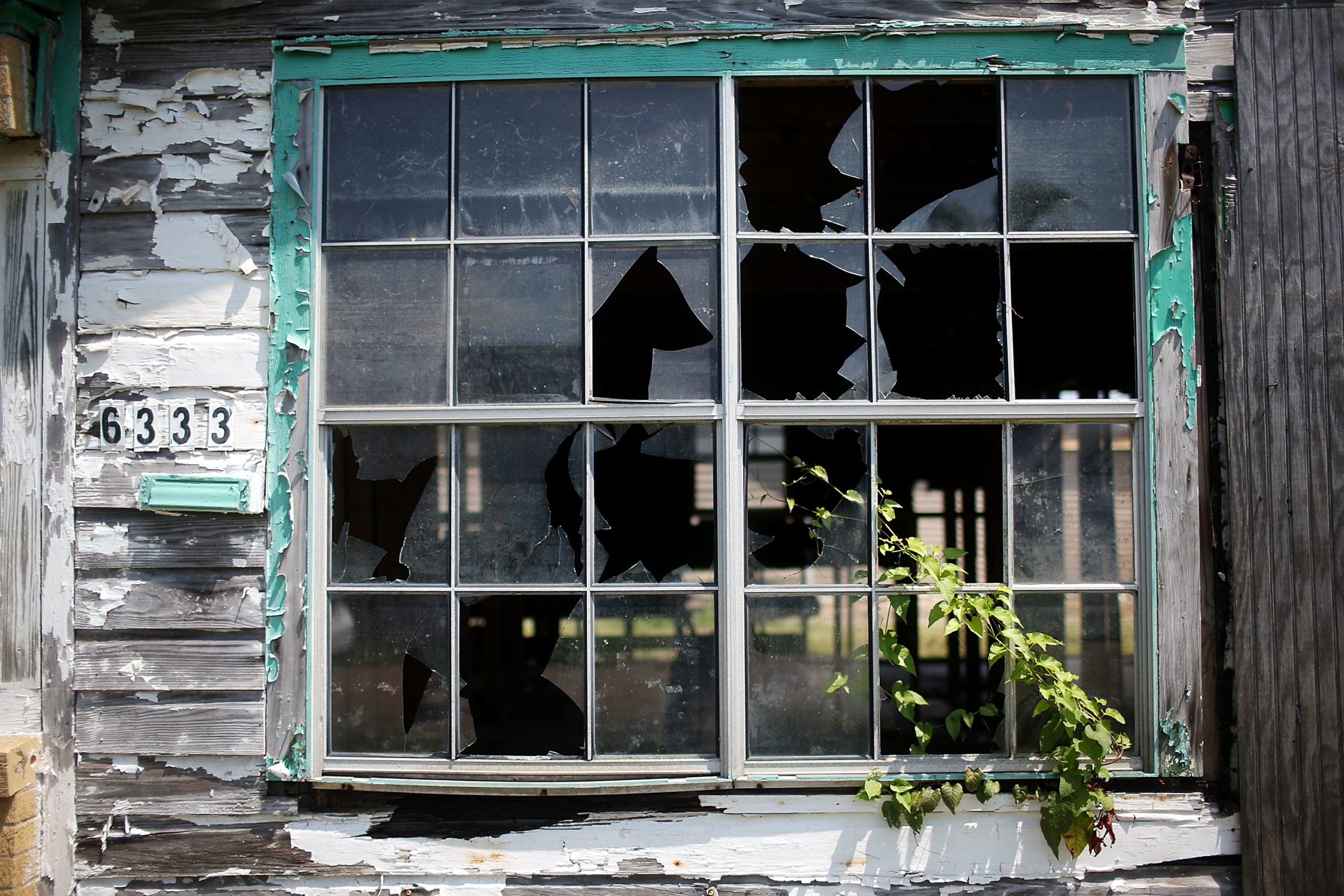During this eruption of righteous anger and action in cities across the country sparked by George Floyd’s murder in Minneapolis, while the majority of protests have been peaceful, there has also been some looting. This looting and property destruction is serving as political speech for a people who have been marauded for far too long.
A legal and extralegal system of plunder has operated in American cities and states during and since segregation, sustaining itself with incredible and unabashed vigor.
The first post-slavery manifestations of this mass theft from black citizens were the Jim Crow laws, instituted after Reconstruction, from 1877 until the Civil Rights Movement of the 1950s and 60s. Black people paid taxes to governments that refused them even the illusion of democracy through the ballot, denying them the political agency connected to taxation and diverting revenues primarily to whites-only facilities. Meanwhile, only the dregs of their coffers trickled into black public services. The vestiges of this inequality still exist, as black schools suffer from underfunding relative to their white counterparts even today.
Often, states and municipalities would fail to provide public services at all. For example, in 1959, when forced to integrate public facilities, Prince Edward County in Virginia instead shut down its public schools and set up an all-white private academy, which they kept afloat through government subsidies — a part of a systematized opposition to desegregation called “massive resistance.” Police forces, funded by taxes, failed (and are still failing) to protect black folks, openly working with their white protectorates to lynch black people, either participating in the act itself or the cover-up afterward, to say nothing of outright massacres committed in Tulsa, Philadelphia and elsewhere.
“A legal and extralegal system of plunder has operated in American cities and states during and since segregation, sustaining itself with incredible and unabashed vigor.”
This state plunder perpetrated against the black populace set the stage for the Great Migration of black people northward in search of opportunity and the protection of the law, and catalyzed the civil rights movement. The fall of segregation under Supreme Court cases and federal legislation in the 1950s and 1960s seemingly promised an end to the blatant neglect of blacks through integration and equal political say.
However, the despoiling would continue in the legacy of segregation: urban underinvestment. Systematic underinvestment began with the implementation of “redlining” and blossomed under a policy buzzword: “benign neglect.” The Federal Home Loan Bank Board (FHLBB) commissioned the Home Owners Loan Corporation to create maps of municipalities, categorizing neighborhoods by the level of risk inherent in lending money for a home purchase in the area; this color-codification was nearly entirely based on the racial composition of these neighborhoods, with black communities in cities labeled the riskiest and penciled in red — hence “redlining.”
Thus the FHLBB, via private lenders, refused to lend to and insure black people trying to purchase homes in these red-lined zones. Because of the refusal of insurance, the rest of the mortgage industry followed suit.
Withholding much-needed capital and preventing black inner-city residents from generating wealth and owning property has contributed to the massive racial wealth gap we see today. This came just as the Department of Veterans Affairs began sponsoring homeownership through the G.I. Bill, subsidizing and guaranteeing the purchases of homes for white veterans while turning away black ones in the booming post-war economy; federal tax dollars funded these loans to whites, amounting to a huge wealth transfer.
“Systematic underinvestment began with the implementation of ‘redlining’ and blossomed under a policy buzzword: ‘benign neglect.'”
The federal government subsidized the build-out of white suburbs via the installation of highways, largely constructed at the behest of numerous federal highway acts. Commuting was expensive and difficult prior to the interstate highway system, which meant more people lived in cities. These roadways were first designed to function as traffic reduction and military-preparedness measures, but in vivo enabled white people to abandon cities as they could now easily commute from suburbs.
Black people, thanks to the explicitly racist housing covenants promoted by the Federal Housing Administration, did not have this option and stayed in inner cities, but their taxes still paved roadways, expediting white travel. This white flight wasn’t necessarily racially motivated in all cases (although there is a strong, potentially causal relationship between the Great Migration of black folks into cities and white flight out of them). Suburbs enticed white homebuyers out of the city.
In Boston, for example, housing costs initially rose after the war due to urban renewal, so working-class white folks were pushed out into the suburbs because they could no longer afford to live in the city. Working-class black folks, meanwhile, did not have this option and were de facto left in ghettos or pushed into public housing which, if you can believe it, was later defunded.
These highways, which enabled the flight and cut into bustling downtown areas, were massive public works. Land had to be cleared to build and erect these testaments to the white stranglehold on the state, which meant cities and states claimed eminent domain to bulldoze affordable housing in predominantly black areas to create room for highways. Governments and urban planners viewed these neighborhoods as unattractive slums. In their eyes, they were solving two problems at once: beautifying the city by clearing it of “debris” — to quote James Baldwin, “urban renewal means negro removal” — and crafting city cores to be more accessible for white people.
“Urban renewal means negro removal.”
A white middle-class exodus meant cities’ tax bases began to dwindle. After sociologist and former Senator Daniel Patrick Moynihan (referred to as a “ruling class hero” in Rolling Stone in 1976) recommended the policy of “benign neglect” with regard to issues of race, i.e. ignoring the issue entirely, cities were all too eager to solve their money problems by just not spending money on black people. Fire departments failed to respond to fires in the South Bronx in the 1970s; waste management departments neglected to clear trash dumped in Roxbury, Boston in the 1980s; whole neighborhoods were abandoned in the reconstruction of New Orleans after Hurricane Katrina.
Public services were rolled back into the parts of cities that politicians cared about developing, clinically labeled “planned shrinkage” in New York City by planner Roger Starr. This systematic municipal underinvestment in black neighborhoods, alongside redlining, meant falling rents and property values in black neighborhoods at the exact same juncture as revitalization efforts meant the opposite for downtown areas.
Property owners found that, in these inner cities, they could not turn enough of a profit from falling rents against preset mortgages — some even burned homes to the ground to collect on the insurance money. The phrase “the Bronx is burning” refers to this phenomenon and to the city literally being on fire as a result of budget cuts to the fire department. The urban deterioration decried by government officials at the time was a product of their own making.
“Cities were all too eager to solve their money problems by just not spending money on black people.”
On top of all of this, cities remain attached to the most blatant forms of exploitation, if not outright open-air theft — cash bail and asset forfeiture, explicitly codified mechanisms for municipalities to make money off the backs of the mostly black working-class urban residents who cannot fight arrests in court. The U.S. is one of only two countries to still rely on for-profit bail, with defendants paying the government money to be released upon being arraigned, to say nothing of asset seizure policies wherein no one even needs to be charged with a crime for property to be repossessed and retooled by the police.
Looting, no?
I don’t mean to imply that black people have languished helplessly under impossible conditions. We’ve created cooperative housing structures, fought to develop community land trusts and agitated for affordable, discrimination-free housing. When our tax dollars and savings in banks have been held indisposed, we’ve moved toward a neighborhood-oriented economic democracy where communities make investment decisions, direct their own money and provide public services.
But the looting is still ongoing.
Black communities have been disenfranchised, excluded and robbed for the past century by the states and cities they’ve called home.
What’s happening now is a fight for the redistribution of wealth, without which there can be no racial justice. And the protests have only just begun.





